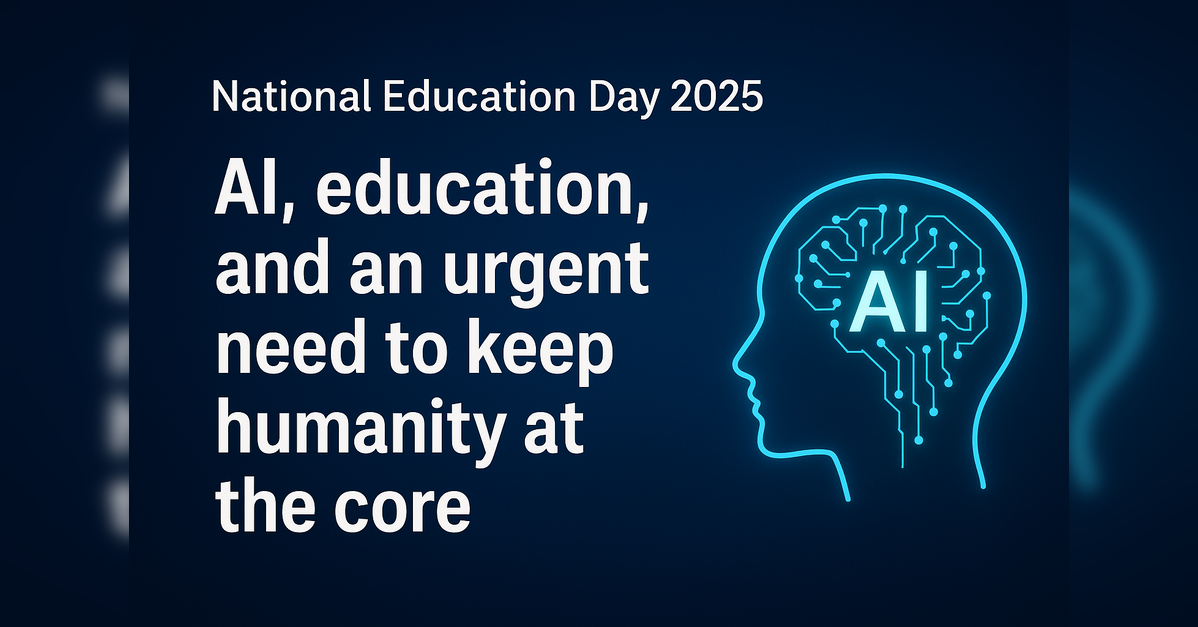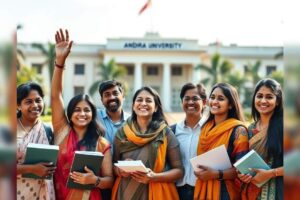
Keeping Humanity at the Core for National Education Day 2025, ETEducation

Can a machine teach us how to think? Can algorithms inspire curiosity, empathy, or the ability to wonder? As the world marches into an AI-driven future, education stands at a defining moment, caught between the precision of technology and the depth of human imagination.
In classrooms, labs, and lecture halls across the globe, artificial intelligence is no longer a futuristic concept — it’s a living, learning partner. From adaptive learning platforms to AI-powered assessments and automated administration, technology is reshaping the way knowledge is created, shared, and absorbed. The global AI in education market, valued at around $5.9 billion in 2024, is projected to skyrocket beyond $32 billion by 2030, growing at an estimated 31– 43% CAGR.
But as automation accelerates, so does the need to protect what makes us distinctly human — our curiosity, creativity, and conscience. The 2025 theme for National Education Day — “AI and Education: Preserving Human Agency in a World of Automation” calls for reflection: How can we embrace intelligent machines without losing the essence of being human?
Rethinking the purpose of learning in the AI era
As generative AI tools make it possible to summarise complex texts, write essays, and even solve intricate mathematical problems within seconds, educators worldwide are grappling with a difficult balance. The convenience of automation risks undermining the very purpose of education — to think originally and reason independently.Prof Sandeep K Shukla, Director at IIIT Hyderabad, observes that this concern is not limited to India but is being echoed globally. He notes that while GenAI can perform many academic tasks, it often produces what he calls the “probable completion of prompts” — ideas and sentences derived from what the model has already seen during training. As a result, the element of human originality is easily lost in the process.
He warns that unless educators become adept at recognising AI-generated material, the line between authentic and automated learning may blur. Yet, paradoxically, he sees this as an opportunity for systemic reform. India’s longstanding reliance on rote learning, he suggests, is now being challenged by generative AI itself — forcing institutions to rethink what and how they teach.
Echoing this sentiment, Prof Ajay Kapoor, Vice Chancellor of Somaiya Vidyavihar University, emphasises that Indian education, rooted in reflection and intuition, must blend harmoniously with AI’s precision. He reminds that “AI must be a tool to deepen the imagination, not define it,” ensuring students see intelligence as a means of serving humanity, not replacing it.
Building the next generation of AI-native learners
Even as the debate continues on preserving creativity, institutions across India are proactively preparing students for a world where AI is an everyday collaborator. Many business schools and technical universities are embedding AI deeply into their learning frameworks, not as a subject, but as a skillset that cuts across disciplines.
Institutions across India are embedding AI into their curricula not merely as a subject but as a skillset interwoven with purpose. At NIIT University, says Prof Parimal Mandke, Vice-President, “AI is integrated into projects, internships, and multidisciplinary research — enabling students to use technology to strengthen ideas, not as a shortcut to thinking.” The university’s approach ensures that creativity, ethical reasoning, and decision-making remain human-led, while AI acts as an enabler of greater impact.
This philosophy aligns with a broader movement toward experiential and ethical innovation. Nishant Chandra, Co-Founder of Newton School, observes that “education in the AI era must evolve from content delivery to capability building.” He highlights that forward-looking institutions are designing problem-solving frameworks where learners co-create with intelligent systems — preserving human agency by “translating intuition into computation and ethics into design.”
At BITSoM (Bharatiya Institute of Technology and Management, Mumbai), the focus is on ensuring that every graduate emerges not only as a user of AI but as an innovator. Prof Sarvanan Kesavan, Dean and Professor of Operations, explains that the institute has introduced a blend of foundational and elective courses on AI and digital transformation, coupled with live industry projects. The intent is to help students understand AI’s practical implications across sectors — from finance to NGOs.
He points to BRAIN, the institute’s dedicated AI centre, which drives teaching, research, and outreach. One of its upcoming initiatives is an AI accelerator that will connect Indian startups with students and faculty to co-develop AI-driven solutions. This kind of ecosystem, Kesavan believes, reflects how business and academia can jointly shape an AI-ready generation equipped with both technical fluency and creative agility.
From delivering content to designing curiosity
While some educators focus on technical proficiency, others believe the larger challenge is philosophical — redefining the purpose of education itself. In an age where machines can deliver infinite information, the true differentiator lies in cultivating curiosity and meaning.
Navyug Mohnot, a Stanford-certified Designing Your Life (DYL) educator and visiting faculty at ISB and Ashoka University, argues that India’s education model must now evolve from content delivery to curiosity design. Drawing from the DYL framework, he emphasises that creativity begins with curiosity, connection, and reframing.
He believes classrooms should become “studios of exploration” rather than “factories of performance,” where students learn not to memorise answers but to craft better questions. Mohnot’s perspective reframes technology not as a competitor, but as a collaborator in human creativity — one that helps students design meaning rather than merely consume data. “The goal,” he says, “isn’t to out-compute AI, but to out-imagine it.”
Learning to co-create with AI
The need to rethink pedagogy runs deeper than just adopting new tools — it requires a cultural shift. Educators must learn to use AI as a complement to human creativity, not a substitute. As Prof Shukla from IIIT Hyderabad points out, this calls for a transformation in teacher training itself. Teachers, he argues, must first internalise what creative learning means before they can help students navigate the balance between automation and originality.
Mohnot echoes this view, stressing the importance of reflection. He suggests that classrooms should encourage students to evaluate their collaboration with AI, asking, “What did AI add? What did I add?” Such reflective practices not only build accountability but also reinforce the idea that technology is most powerful when guided by human intention.
Altogether, these perspectives paint a future where co-creation replaces competition, where AI becomes a thought partner in the creative process, rather than a shortcut to avoid it.
Balancing automation with emotional intelligence
While technology continues to advance rapidly, educators are also turning their attention to the cognitive and emotional dimensions of AI use. Aniha Brar, Dean of Students and Undergraduate Programme at Ashoka University, believes that weaving discussions around human-AI interaction into the curriculum will help students better understand both the benefits and costs of automation.
She advocates for using AI in areas that save time, like citation, fact-checking, or information retrieval, but discourages reliance on it for tasks demanding sensitivity, creativity, or critical analysis. According to Brar, the future workplace will still demand timeless human skills such as empathy, adaptability, and collaboration. Students, therefore, must learn not only how to use AI, but how to evaluate its limitations — recognising bias, lack of originality, and over-generalisation in machine-generated content.
Her perspective captures the heart of the current transition: in an AI-assisted world, the most employable graduates will be those who combine technical literacy with human discernment.
Keeping humanity at the centre of innovation
As we celebrate National Education Day 2025, one truth resonates across classrooms, campuses, and boardrooms alike: education’s ultimate purpose is not to produce efficient machines, but enlightened minds.
AI will undoubtedly redefine how knowledge is created and shared. Yet, in this evolution, the real challenge for India’s education ecosystem is not how much technology it can adopt but how well it can ensure that curiosity, conscience, and creativity remain at the centre of learning.
In the end, the story of AI in education is not about machines replacing minds. It’s about building a future where human ingenuity leads, and technology follows.
Source link




